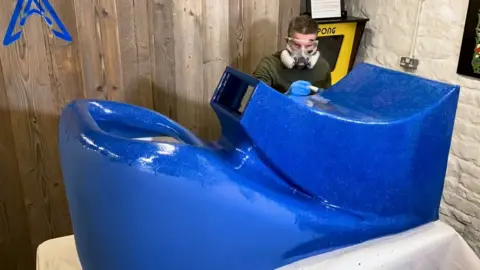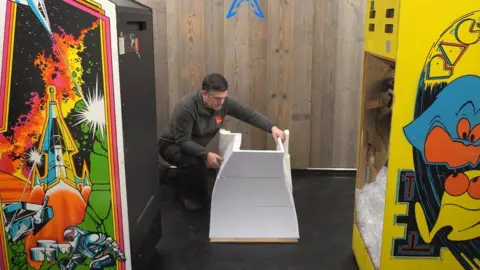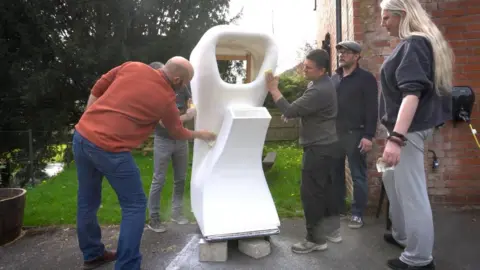Replica of 1970s arcade machine made with 3D printer
 Retro Collective
Retro CollectiveA gaming museum has 3D-printed a replica of an historic arcade machine, Computer Space.
The Arcade Museum in Stroud, Gloucestershire, was missing the first commercially-available arcade video game.
They worked with the company Heber to make an authentic replica.
Neil Thomas, the curator at the Arcade Museum said because it was a replica, and not an original, they were not "scared" to let people play it.
Although the original was not commercially successful due to "intimidating controls and gameplay", a museum spokesperson said, it is now very rare and expensive, with auction prices exceeding £55,000.
The team went so far to create the original feeling of the machine that they used a biscuit tin to replicate the sound of the money falling when players pay for a game.
 Retro Collective
Retro CollectiveMr Thomas: "We liken the idea [of the 3D machine] to display a plaster cast of a dinosaur bone in a museum. While it's not the original it is engaging and stimulates conversation around the topic.
"[And] the really nice thing about it being a replica is we're not scared to let people play on it."
He said they are aware of one other in the country and which is behind a rope, so people can't touch it.
"So you can actually experience it here and you can get frustrated with it, which people do because it's a very frustrating game," he added.
 Retro Collective
Retro CollectiveRichard Horne, the director at Heber, the firm that helped make the machine, said it's the only machine in the arcade which still uses coins which makes it "very authentic".
"As soon as you put the coin in it goes down through the shoot and ends up in a biscuit tin."
He said in creating the machine they used pictures as the reference, printed the sections then put them together with filler and painted it, adding a special resin like the original.
The model was finished off with a vintage CRT monitor previously owned by the BBC and electronics by Heber to create a fully working, full scale replica of the historic machine.
Computer Space is available for visitors of the museum to play.

Follow BBC Gloucestershire on Facebook, X and Instagram. Send your story ideas to us on email or via WhatsApp on 0800 313 4630.
